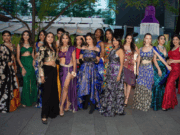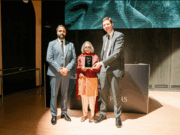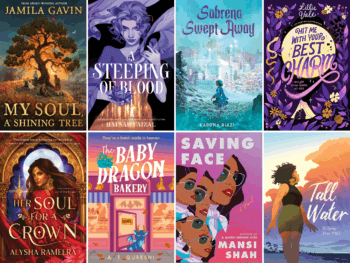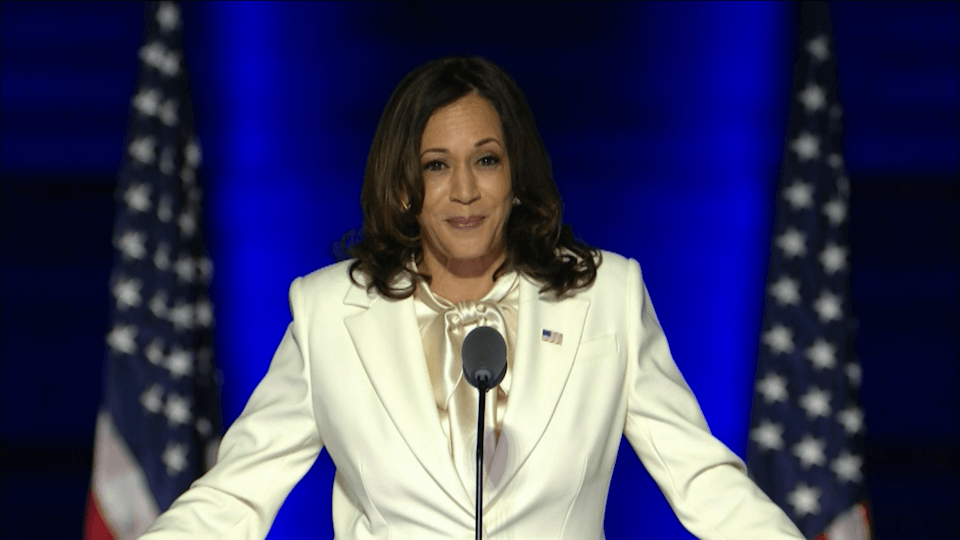
The Colour Of Change: How Vice President-Elect Kamala Harris Became The Most Powerful South Asian Woman In The World
Lifestyle Nov 09, 2020
We take a closer look at the meteoric rise of Vice President-Elect Kamala Devi Harris, how the glass ceiling has shattered and why it took this long.
It took 100 years, 2 months and 18 days.
And as I watched Vice President-Elect Kamala Harris give her acceptance speech on Saturday evening, with the final election numbers projected a win for the Democratic party earlier that morning, I couldn’t believe what I was baring witness to.
I along with my family and friends were mesmerized as Harris — set to introduce President-Elect Joe Biden, came out on stage to Mary J. Blige, in a statement-making crisp white suit in honour of The Suffragette Movement.
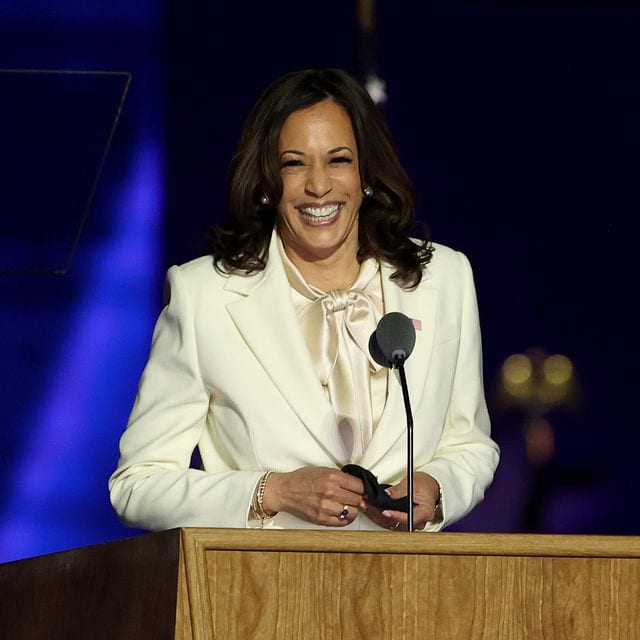
As a politics nerd, I along with my family grew up watching Prime Ministerial and presidential elections for as long as we can remember. Thanks to my father’s encouragement to understand the political and social dynamics that make up this world. My earliest memory of a US race was in 1980, watching Ronald Reagan beat the incumbent Democratic President Jimmy Carter in a landslide victory. I was hooked. Since then, from one election cycle to the next, we as a family were usually greeted with an all-white and an all-male presidential ticket vying for their place in the White House. And that was the norm. Like other facets of society (outside of the traditional vocations expected of us), we didn’t realize the importance of representation. We were just like millions of other families during the late ’70s early ’80s who were making their own mark in our new adopted country. And that included watching, understanding and celebrating the political process.
As the years progressed and my level of understanding of the political dynamics and the respective ideologies of the various Canadian and American political parties increased, I continued to see one all-white ticket after an another. It wasn’t until Geraldine Ferraro became the first Italian-American and the first woman to be on the ticket as the vice-presidential candidate for the Democratic Party in 1984.
And then in 2008, Hillary Clinton continued to chip away at the glass ceiling by running head to head with a relatively unknown junior senator from Illinois by the name of Barak Obama for the Democratic candidacy for the top job. Eight years later, in 2016, she eventually became the first woman to make a presidential run. And well, we all know how that turned out.
That ceiling finally shattered on November 7,, 2020 when Kamala Devi Harris became the first female and the first Black and South Asian woman to be the Vice President of the United States. Making her the most powerful South Asian woman in the world.
Being Shyamala’s Daughter
A child of immigrant parents, Kamala Devi Harris was born in Oakland, California in 1964. Her parents Shyamala Gopalan and Donald Harris met at University of California at Berkeley. They soon got married and at 25, the same year that she finished her Ph.D, Shyamala gave birth to her first child, Kamala. A couple of years later, her younger sister Maya came along. However, it wasn’t until Harris was seven when her parents decided to divorce leaving a young Shyamala, a young scientist, to raise two young girls on her own in the top floor of a yellow duplex in Berkeley.
Kamala and her sister both identified as Black, something that her mother understood and appreciated as Kamala noted in her recently released memoir, The Truths We Hold: An American Journey, “She knew that her adopted homeland would see Maya and me as black girls, and she was determined to make sure we would grow into confident, proud black women.”
And there was plenty of South Indian cultural exposure thanks to their close connection to their mother’s side of the family, with her grandparents and plenty of aunties and uncles to creating that bubble of support. With family trips to India, as well as learning classic South Indian dishes back in America, it was clear that the unique balance between having a Black and a South Asian identity was firmly taking hold.
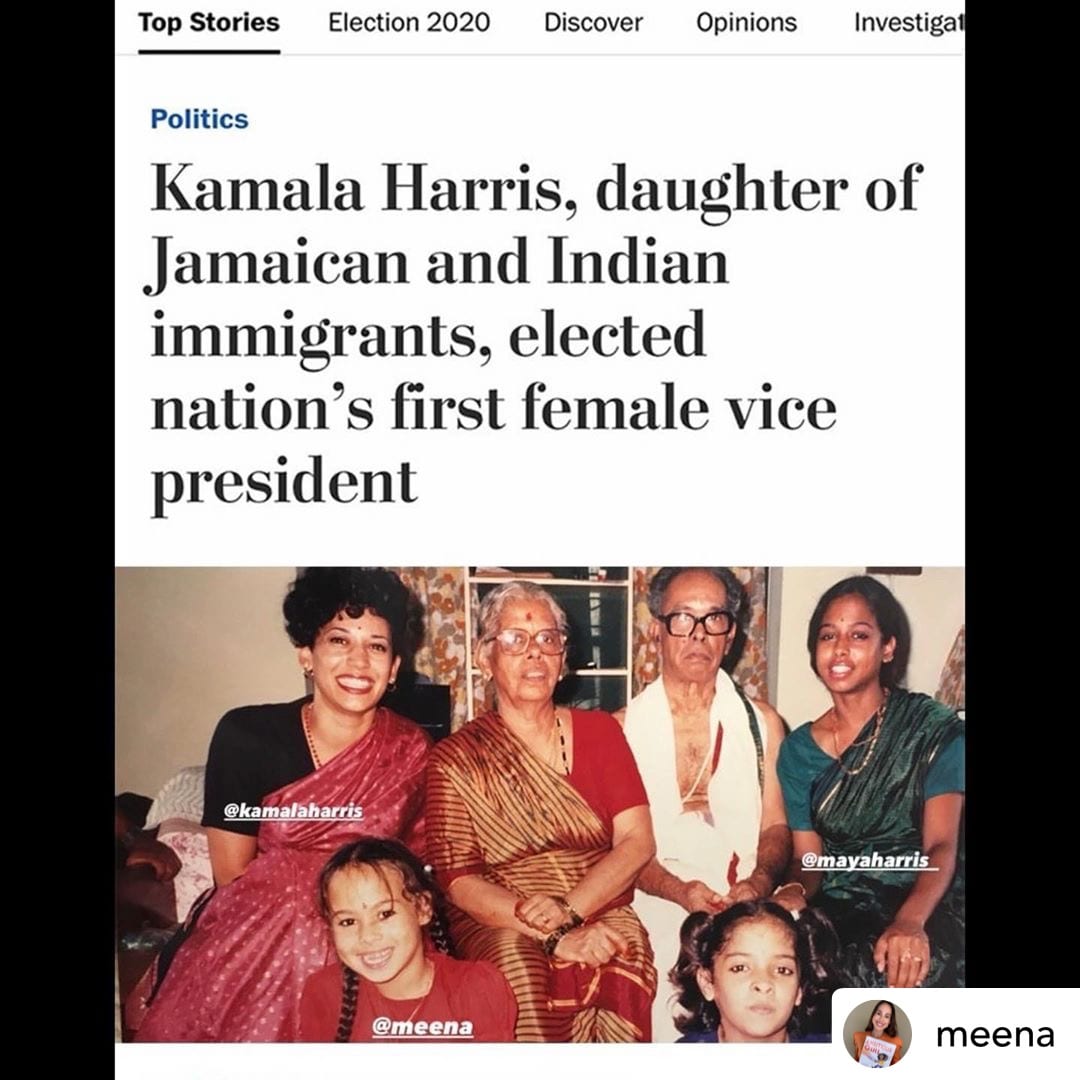
Kamala was not shy about recognizing the strong supportive influence her mother had on her growing up. And that included understanding the value of civil activism. It was something that her mother understood as her own mother —Kamala’s grandmother — was active herself in her village in India. Even though she didn’t attend high school, her grandmother was a noted community organizer. “She would take in the women who were being abused by their husbands, and then she’d call the husbands and tell them they’d better shape up or she would take care of them,” Kamala recalled in her autobiography. “She used to gather village women together, educating them about contraception.” Kamala’s grandfather, P.V. Gopalan was part of a movement to help gain India’s independence. He then transitioned becoming a senior diplomat and relocated to Zambia with his wife to help resettle refugees.
So, it was natural for Shyamala to expose her daughters to the world of civil rights and that was done with stroller in hand. The seed was planted. It was now time to foster it.
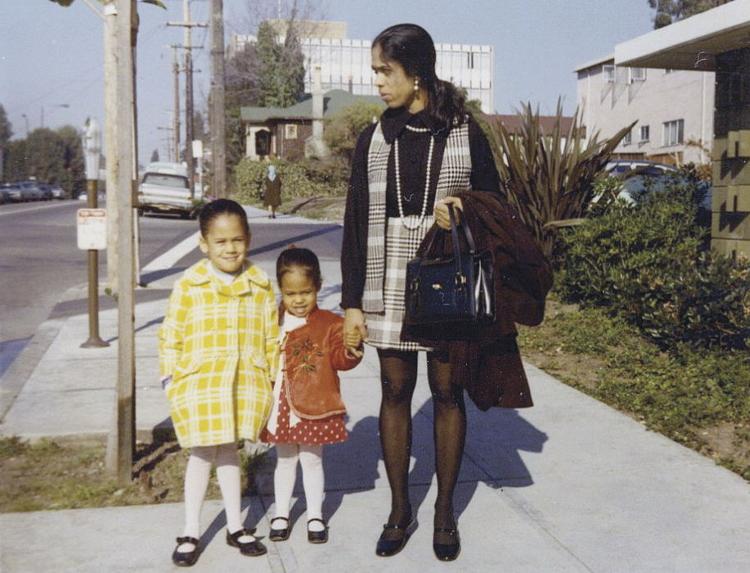
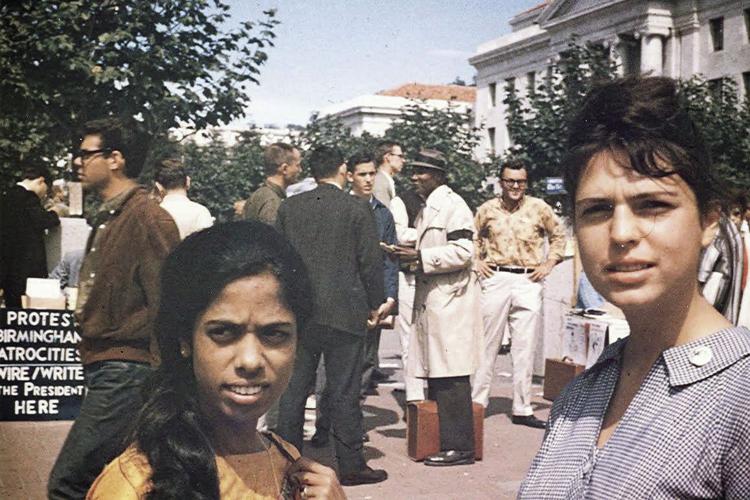
Laying The Foundation
She bounced back and forth when it came to her schooling, which included studying in Montreal. A move that was made after her parents divorced. While her mother taught at McGill University and worked at Montreal’s Jewish General Hospital, Kamala attended elementary school and West Mount High school (where they also count Leonard Cohen as an alum), while adding French to her linguistic repertoire. In 1981, she graduated and decided to make the move from Montreal to Washington D.C to attend Howard University the most prestigious Historically Black College or University (HBCU) and often referred to as the “Black Harvard”. There her activism sensibilities flourished and Kamala participated in various social justice protests including addressing anti-apartheid and other areas of racial injustice. In 1986, she moved back to California and started her law school studies in San Francisco at the University of California’s Hastings College of the Law.
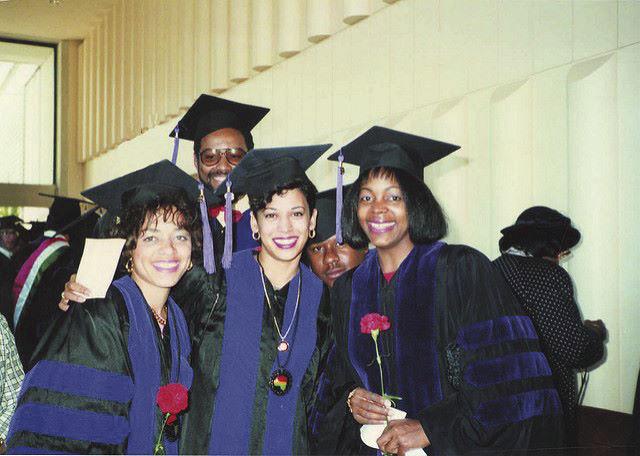
Barriers Were Made To Be Broken
In 1990, after passing the bar, Kamala started her journey as a lawyer with her first job at Alameda County prosecutor’s office in Oakland as an Assistant District Attorney focusing on sex crimes. Her rapid-fire ascent in the judicial world started in 2003, when she ran for district attorney for San Francisco. A tight race which resulted in a run-off, she ended up winning 56.5% of the vote, making her the first Black woman and first South Asian woman to be elected to that office. Seven years later, she threw her hat in the ring to run for the California’s Attorney General, a post which she won again in reelection 2014. Three years after that, she was sworn in the United State’s Senate in 2017. By adding that to her robust portfolio, she made history by being the second Black woman and the first South Asian woman senator. During this time, she held highly coveted roles in various notable committees including on the Homeland Security and Governmental Affairs Committee, the Select Committee on Intelligence, the Committee on the Judiciary, and the Committee on the Budget.
With the power and the spotlight, Kamala quickly became a viral sensation and the source of countless memes thanks to her laser focused prosecutorial-type questioning during senate hearings. Twitter would be lit with “Just wait ’till Kamala Harris questions him!” declarations, with some of her remarks quickly becoming t-shirt slogans, representing her ability to cut through the noise in her pursuit of the facts.

Incredibly, it was only two years after joining the Senate, she then decided to throw her hat in the Democratic Party’s race to find a presidential candidate for the upcoming 2020 election, joining fellow South Asian candidate, Congresswoman Tulsi Gabbard. With two women of South Asian heritage vying for the top job was a turning point when it came to representation of South Asian women in higher political positions. Kamala eventually dropped out of her presidential pursuits in December 2019, dashing hopes for woman of colour while accepting the reality that maybe this country is not ready for this sort of change. And then eight months later, everything changed.
“Having The Audacity”
Senator Joe Biden became the presumptive Democratic nominee for the 2020 US Presidential Election and he needed to pick a running mate. After much speculation, he announced on August 11, 2020 that Kamala Harris would be added to the ticket. This made her the first Black woman and the first South Asian woman to do so. This remarkable choice, one which she commended him for having “the audacity” to do so in her acceptance speech, grabbed international headlines and a cause for many celebrations among the Black and South Asian communities from across state lines, and international borders. The glass ceiling just got a few more cracks.
After overcoming hurdles of campaigning during a pandemic, and after 5 long days of counting, the historical moment was finally announced. She would now become the first female, the first Black and the first South Asian Vice President of the United States. Taking office on January 21, 2021.
What Took So Long?
As I scrolled through Instagram and Twitter reading the various celebratory posts recognizing this historical moment, it was quickly pointed out that even though this is a momentous occasion when it comes to American politics, it’s almost old hat when it comes to the political scene in South Asia.
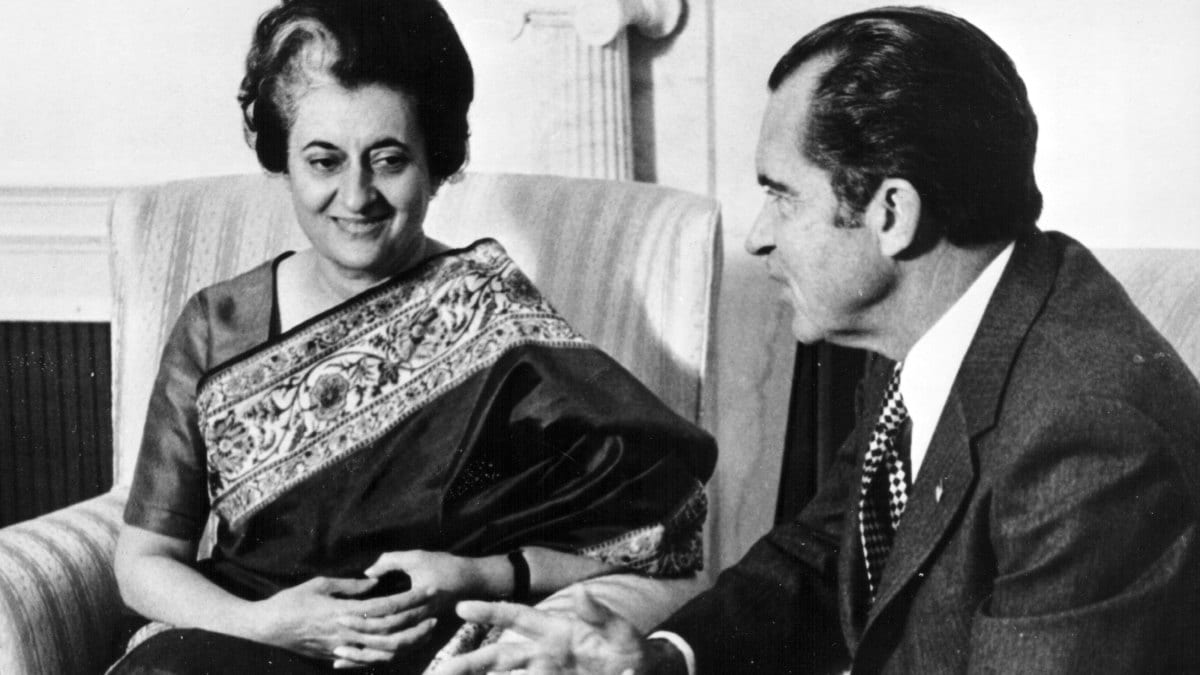
Yes, it was Indira Gandhi who broke the first barrier in South Asian politics when she became the first female Prime Minister of India in 1966 lasting a decade. She then regained the post in 1980 until her assassination in 1984.
Four years later in neighbouring Pakistan, Benazir Bhutto became the country’s first female Prime Minister of the country and the first woman to lead a Muslim nation in 1988. She held that office until 1990 and then again from 1993 to 1996. After being in exile in London she returned to her homeland with plans to run in the 2008 general election. All of that was cut short when she was assassinated during her campaign rally in Rawalpindi in December 2007.
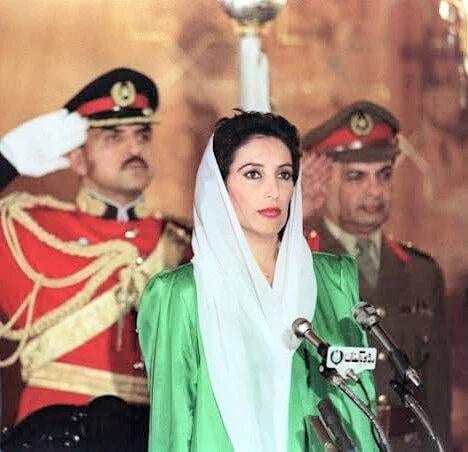
Sheikh Hasina became the first Prime Minister in Bangladesh serving her first term from 1996 to 2001. Eight years later in 2009, she reclaimed her role for the second time. In 2014, she came back for a third term and in December 2019 she claimed a fourth term, making her the longest serving Prime Minister in the history of Bangladesh.
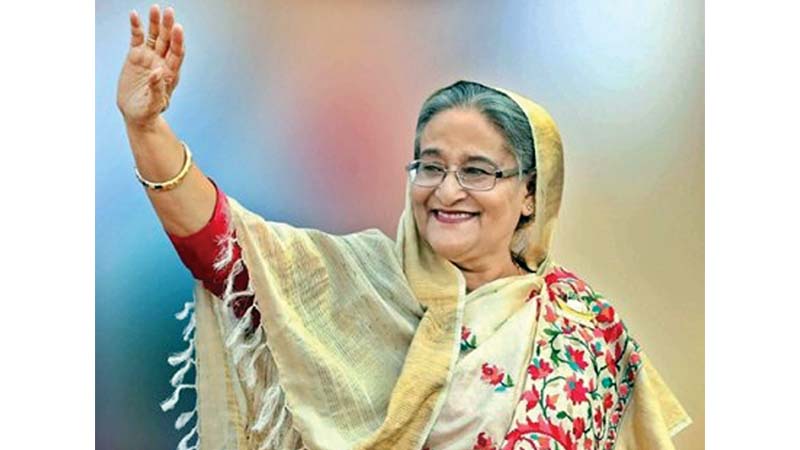
What can’t be ignored is that these three women came from fiercely patriarchal societies, where cultural and religious doctrines are often wielded as weapons to limit or remove the rights of women. Yes, the common thread with these powerhouses is the fact they come from familial political histories with each of them being an offspring of a former Prime Minister/President. However, in the context of breaking barriers in the political scene it’s no doubt that these women have achieved levels of political success long before the United States could even fathom the thought.
The United States often sees herself as more progressive, specifically when it comes to countries seen as “third world” (at the time) and that included India, Pakistan and Bangladesh. Even though the gulf of geopolitical power between these four nations is a lot smaller now, especially between the United States and India, if you track it through the ’80s and ’90s, the United States viewed itself as a country that stood on a higher plain when it comes to their positioning on the world stage.
The fact is that bringing woman to the political table has always been a struggle for the United States. There were markers of societal evolution: the women’s right to vote was established a 100 years ago — on August 20, 1920 to be exact — with The Suffragette Movement, and The Voting Rights Act passed in 1965 banning racial discrimination when it came to the act of casting ballot, thereby allowing the disenfranchised Black community to participate in the electoral process. These can be seen as undeniable points of progress when it comes to societal developments. However as noted at the top, it wasn’t until 1984 when Walter Mondale took the bold step to bring on Ferraro as his first female VP pick for the election. And it took 24 years until Hillary Clinton hit the Democratic Primary circuit for the top job before Barack Obama took the prize. And then it took another eight years for her to return to the race, this time running as the official presidential candidate for the 2016 election, losing to real estate mogul and reality TV star Donald Trump.
What also needs to be noted is the changing demographics of the nation through the years. In recent cycles, women have become a powerful voting bloc, evidenced by the frenetic outreach by both political parties in recent election cycles but most notably in the 2016 and 2020 elections. And because of that interest and power, there’s been a remarkable uptick of women actively seeking a role in American politics. Since Donald Trump was elected in 2016, there was whopping 36,000 women who have expressed interest in running for office. Yes, 36,000. The result? A record breaking 185 women held seats in US House of Representatives (with both the Democratic and the Republican parties combined) in 2018. with that number dipping to 101 women this November. Regardless, there are hundreds — even thousands of more cracks in that glass ceiling.
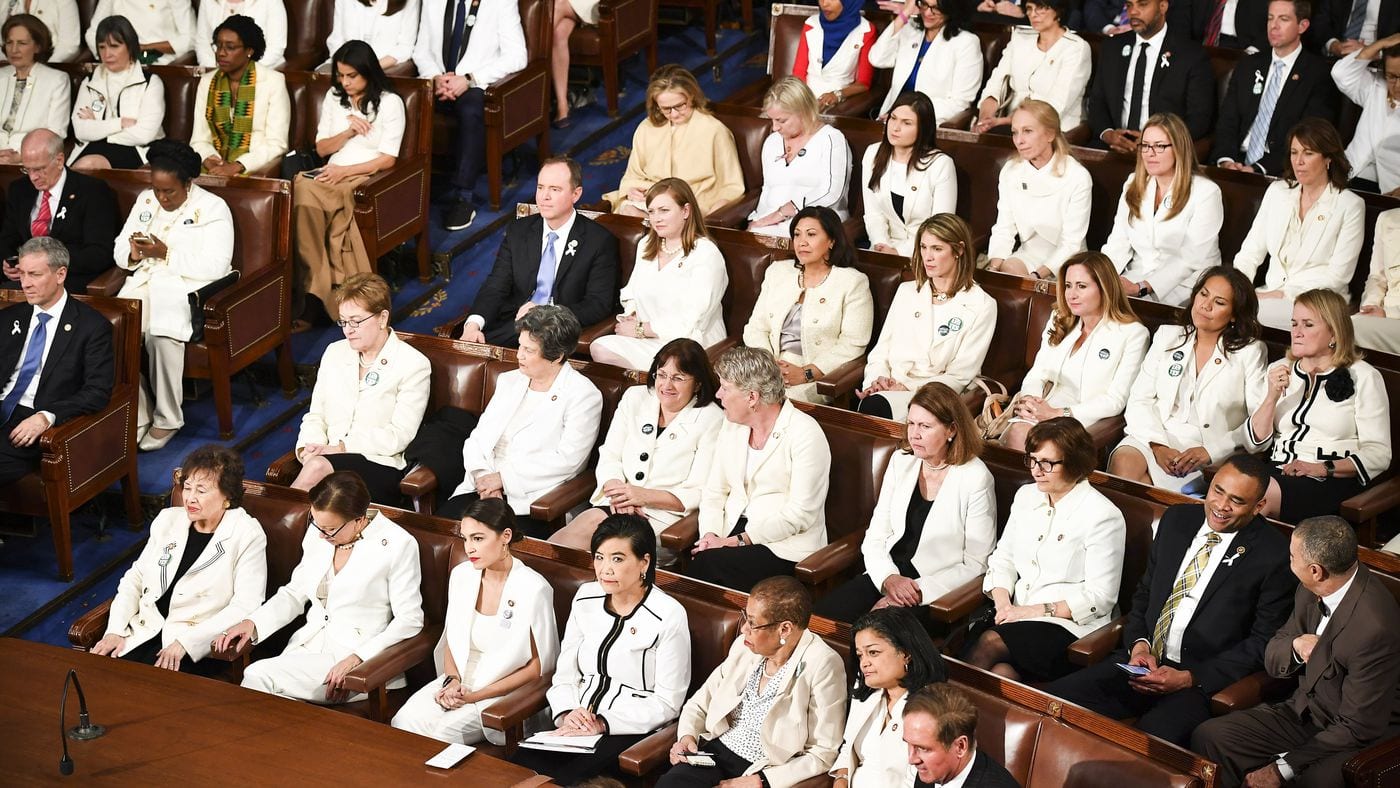
All of this may explain why it took America so long to elect their first woman and a woman of colour for the second-highest position in arguably the most powerful country in the world. Another explanation can be that the timing is just right. With the kind of enlightenment that 2020 is delivering, one can point to the various elements which has been important societal shifts when it comes to recognizing and addressing racial injustice, the amplification of BIPOC voices, the power of the #MeToo movement and so on. And we can’t forget social media, bringing a global and societal connectivity like no other (and yes, we know that it can be incredibly divisive as well).
We Are Here
There’s more work to be done. There has been active attention focused on addressing the gender and racial inequality in the US House and Senate by various activists and political players. Even though the US House of Representatives is seen as more diverse than it has ever been with 22% being from racially diverse backgrounds, the US Senate is a different story. If you break it down by demographic, the United States is seen as a Democratic leaning country, a party which historically does attract more women. Having said that, the Conservative voice —and rightfully so — is also alive and well. Regardless of political ideologies, it’s just nice to see such representation in political offices. Let’s not forget, we also owe thanks to Congresswomen Pramila Jayapal and Tulsi Gabbard and former South Carolina Governor and United States Ambassador to the United Nations Nikki Haley for chipping away at the ceiling as well.
All those cracks have finally united to cause the glass ceiling to come crashing down. Thank you Madame Vice President-Elect.
Let’s hope their shards are swept away for good.
Main Image Photo Credit: www.montreal.ctvnews.ca
Hina P. Ansari
Author
Hina P. Ansari is a graduate from The University of Western Ontario (London, Ontario). Since then she has carved a successful career in Canada's national fashion-publishing world as the Entertainment/Photo Editor at FLARE Magazine, Canada's national fashion magazine. She was the first South Asian in...







